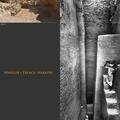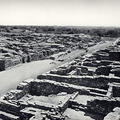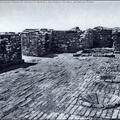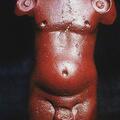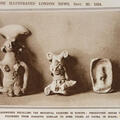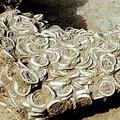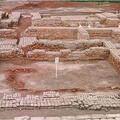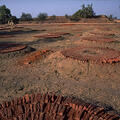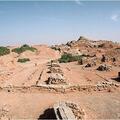Wheeler's Harappan Trench
Sir Mortimer Wheeler's famous trench at Harappa in 1946 and today, when it has been filled in once again. Wheeler writes of the incision he orchestrated: "The monsoon-cutting was filled with mud-bricks, which were carried up in bricks and mud to form an anti-flood 'bolster'' or bund, spreading protectively beyond the outer foot of a great defensive wall 45 feet wide at the base and tapering upwards. The main bulk of the wall was of mud-brick but there was an external revetment of baked brick four feet wide as preserved.

